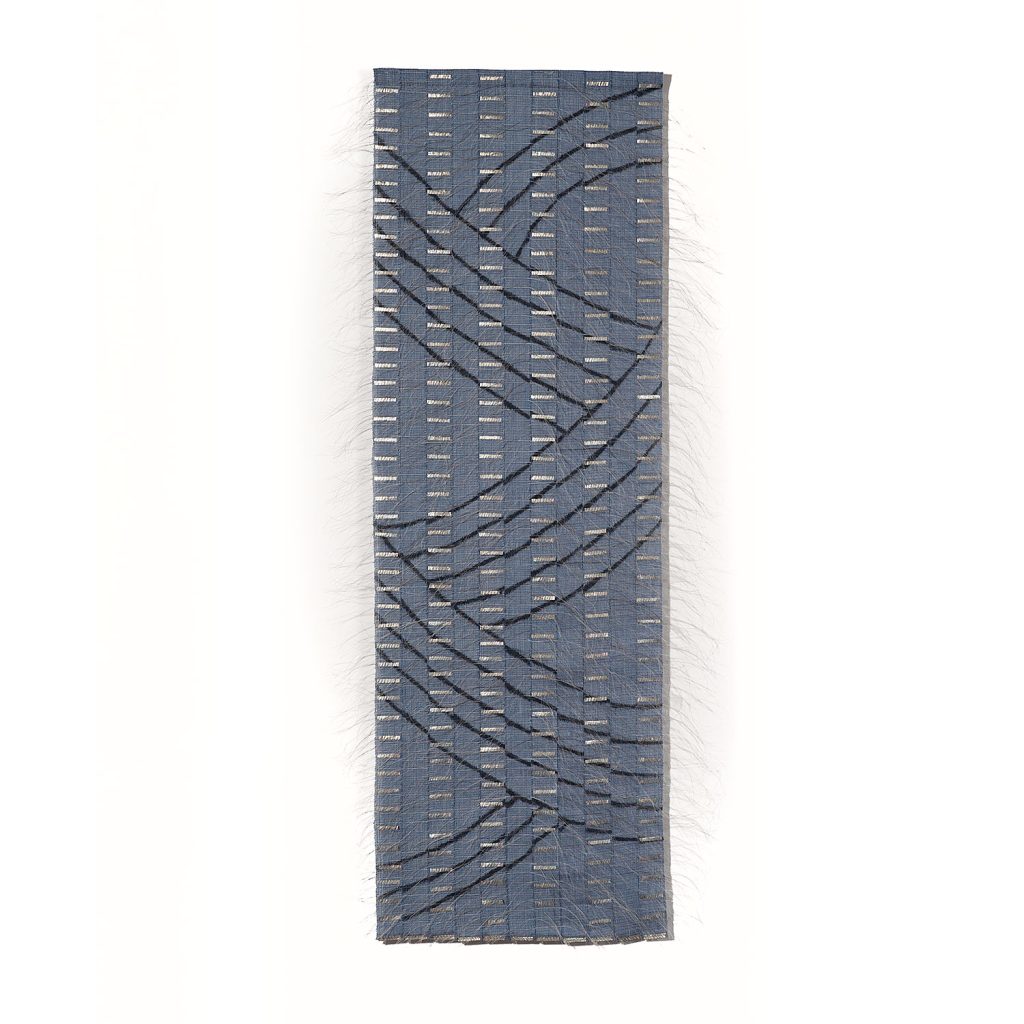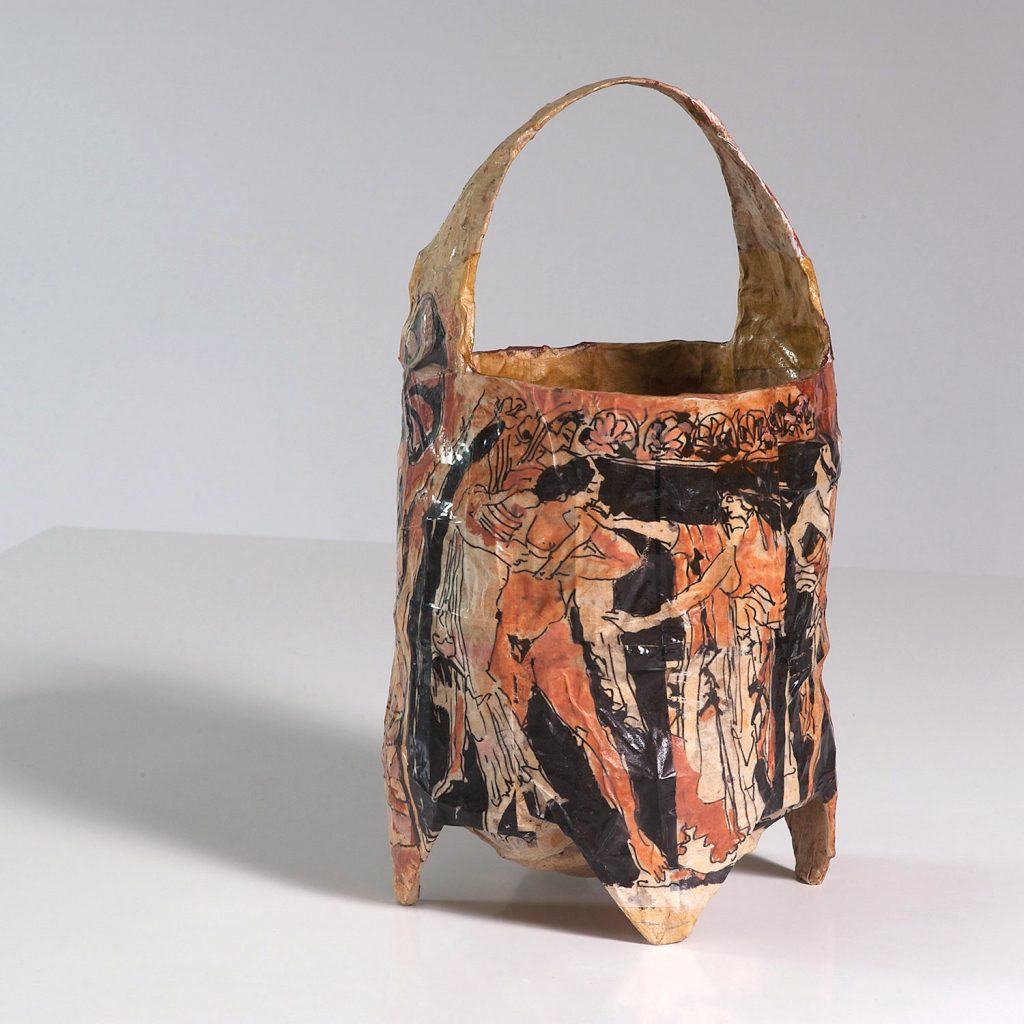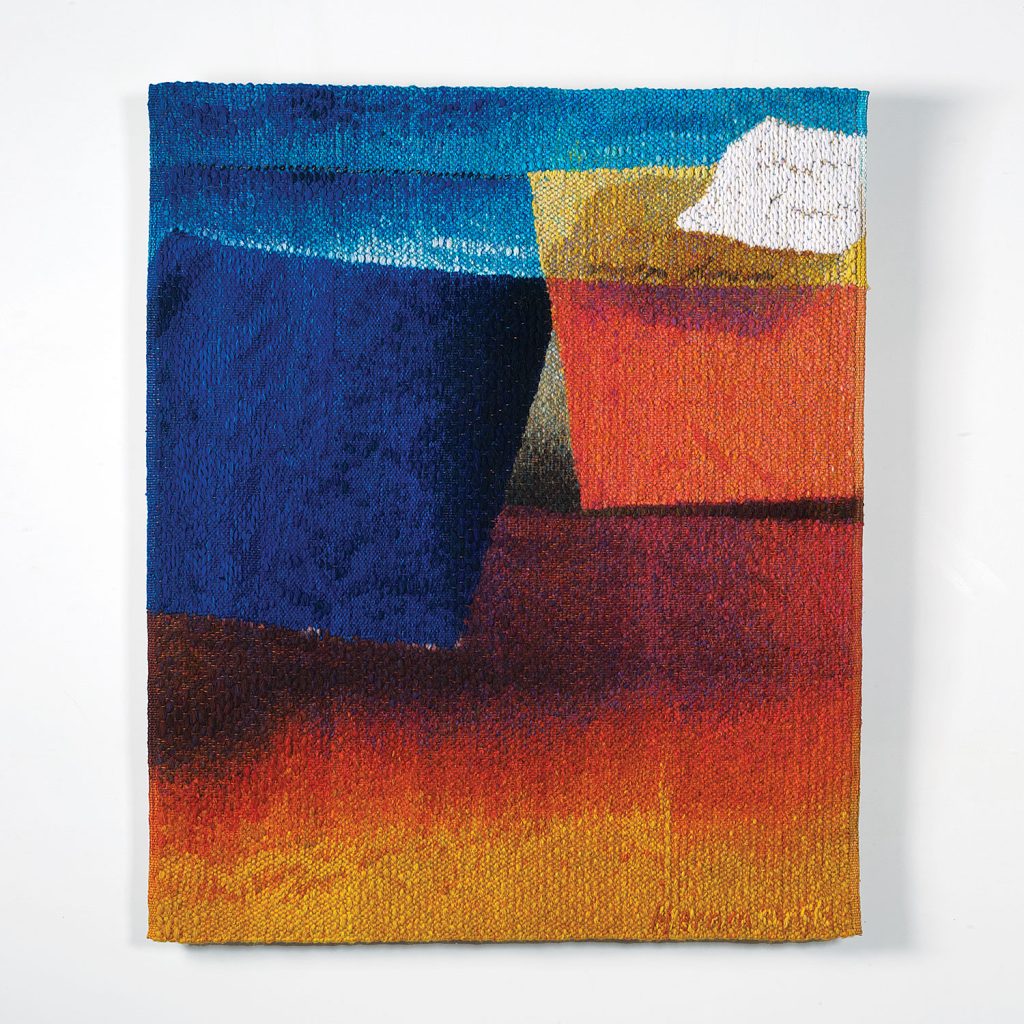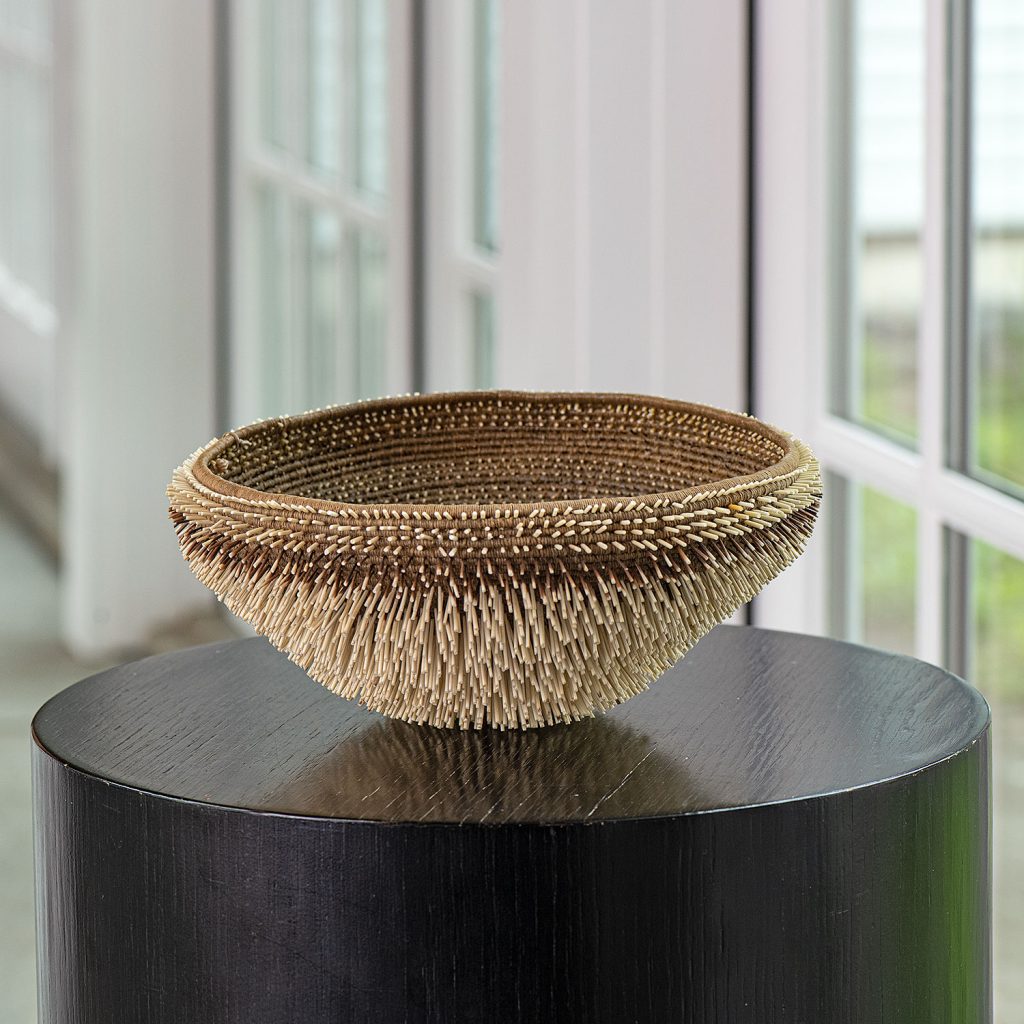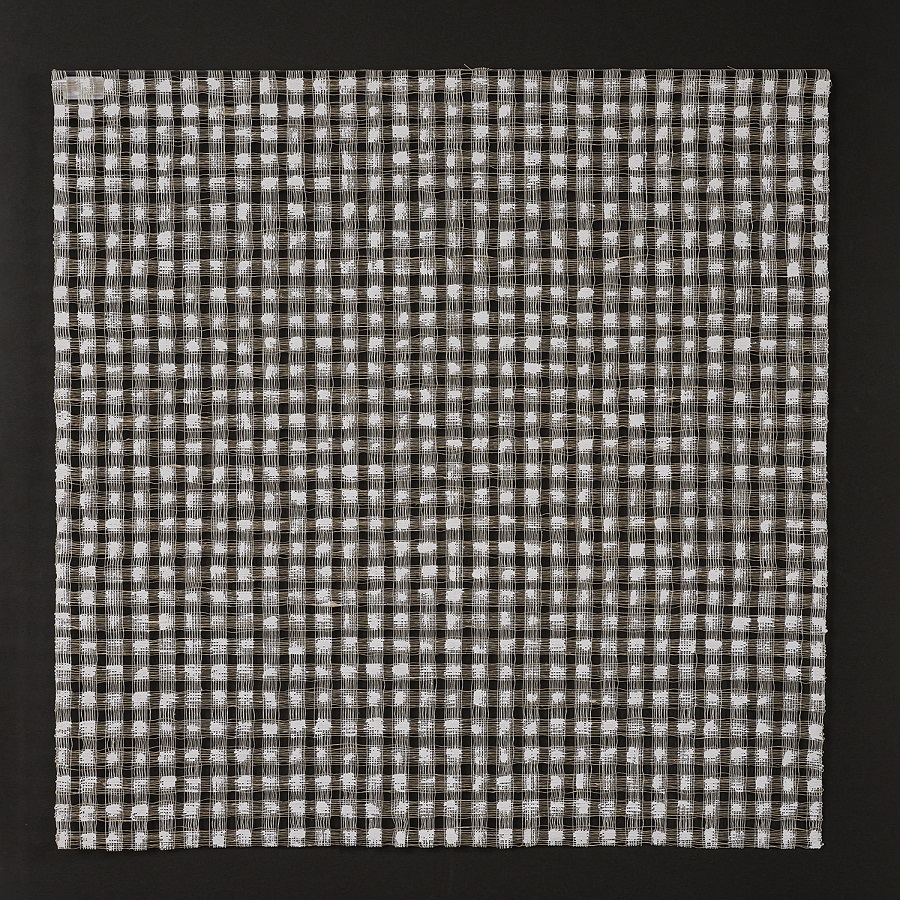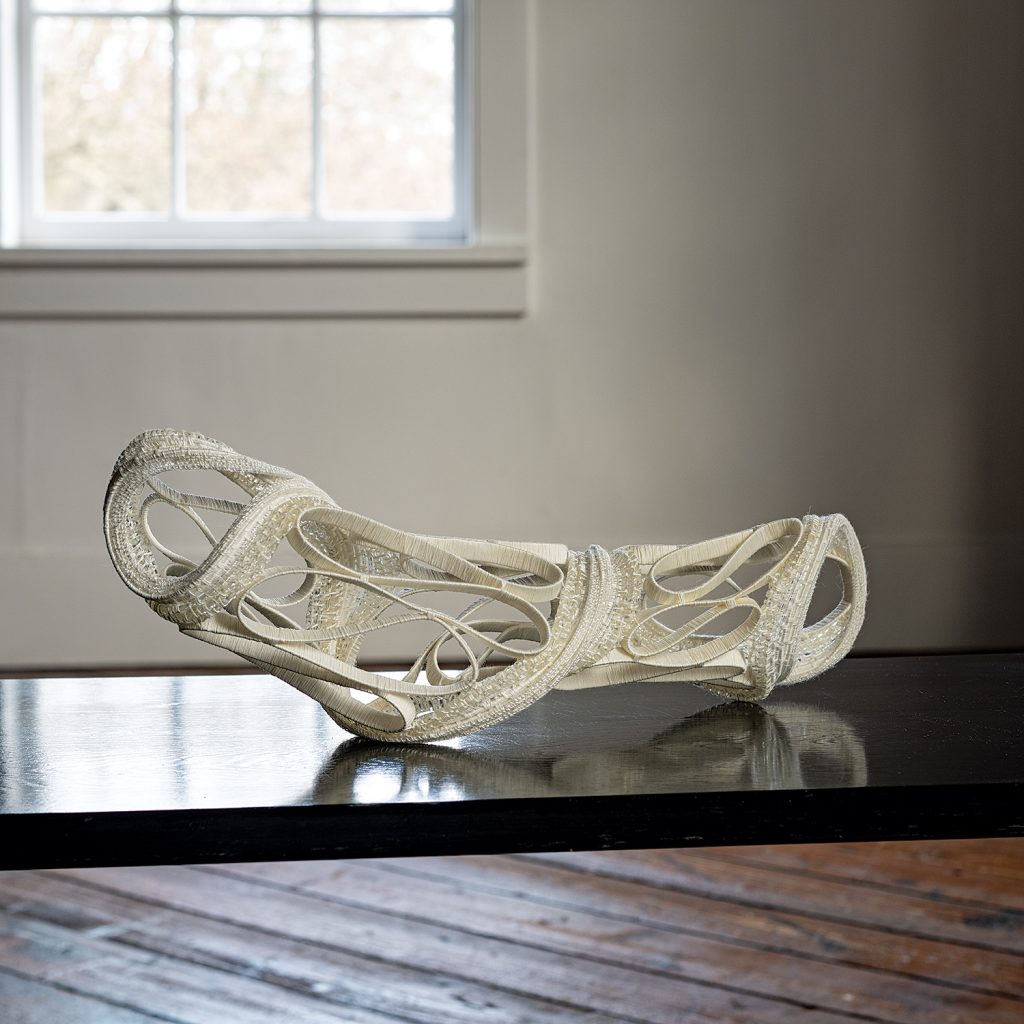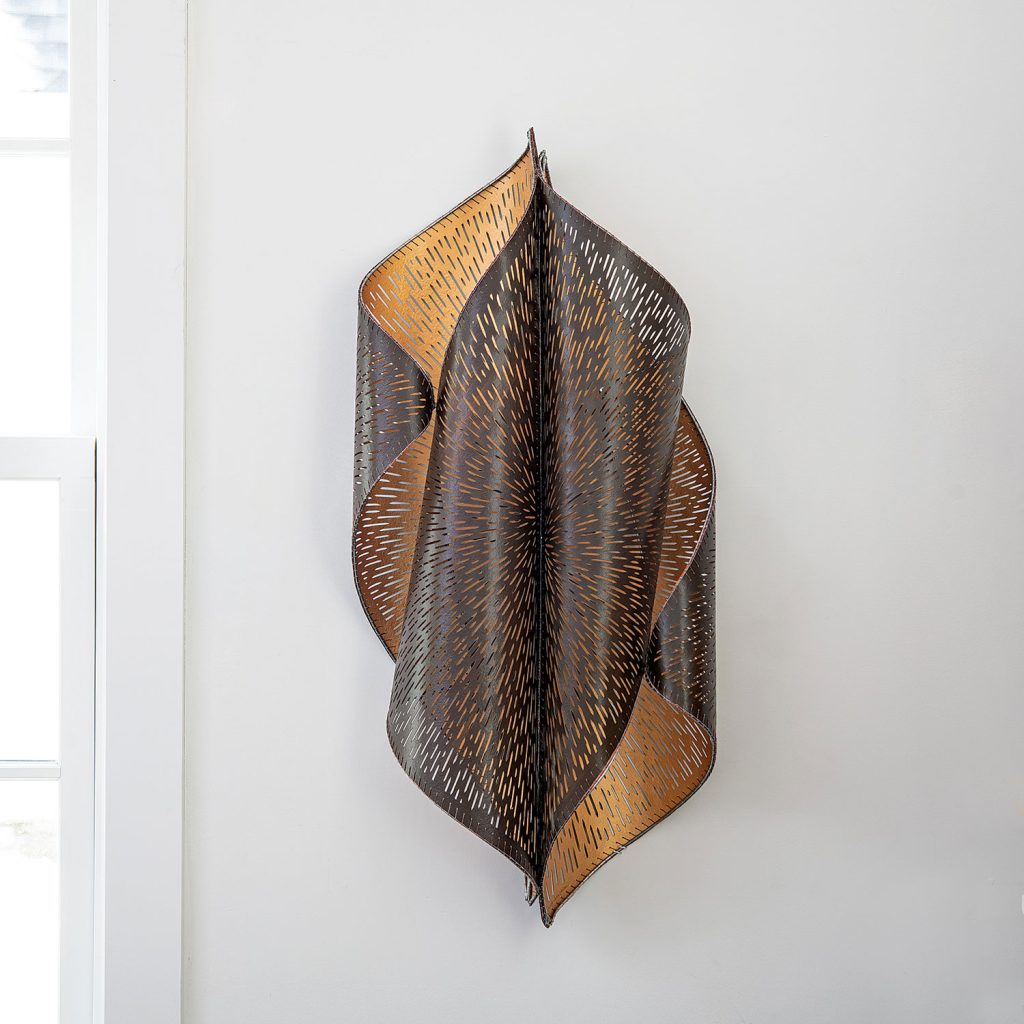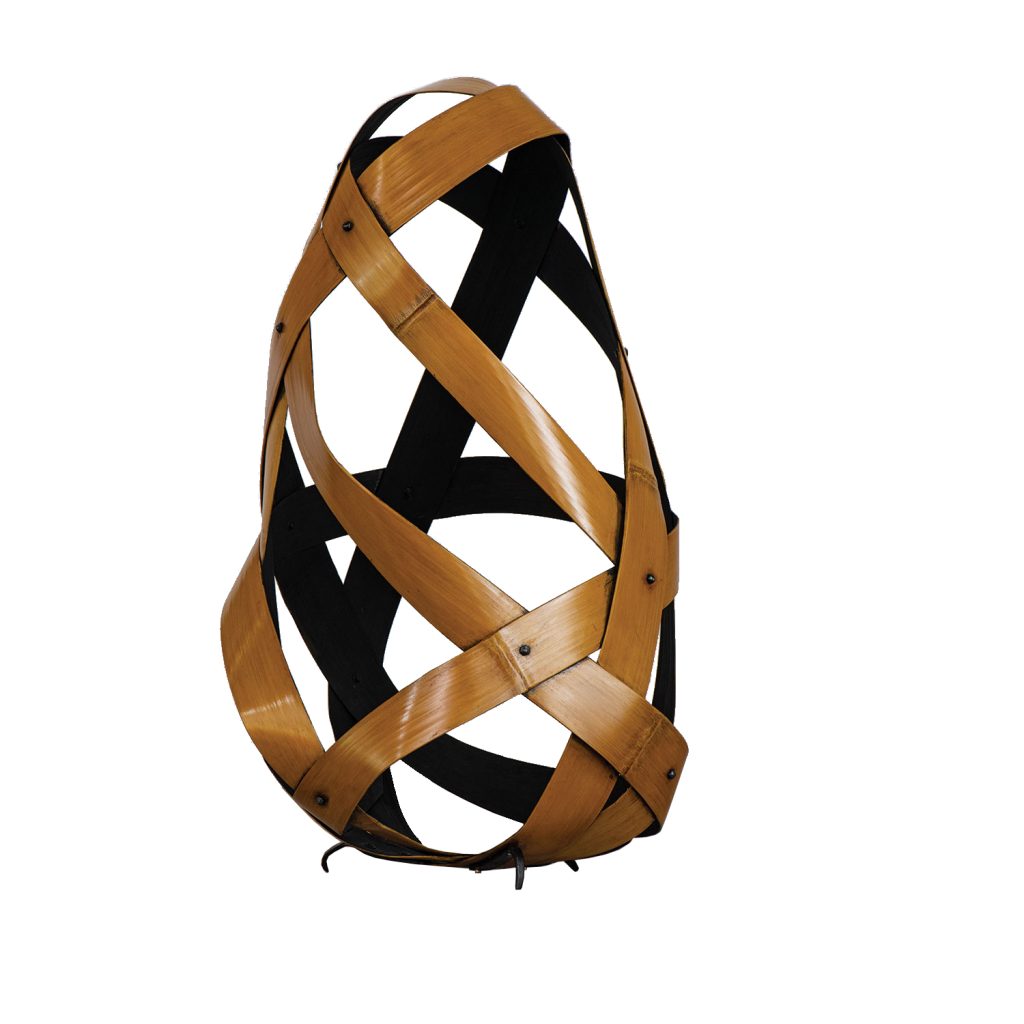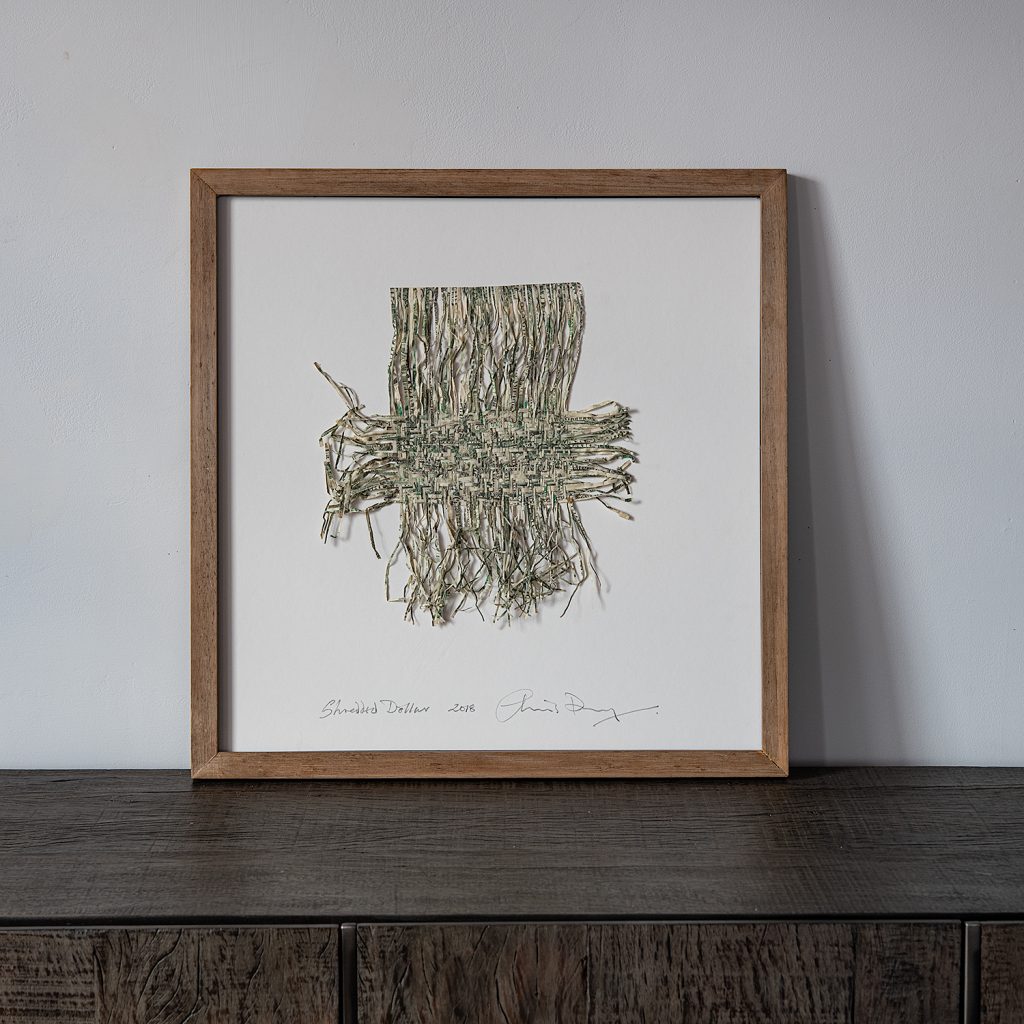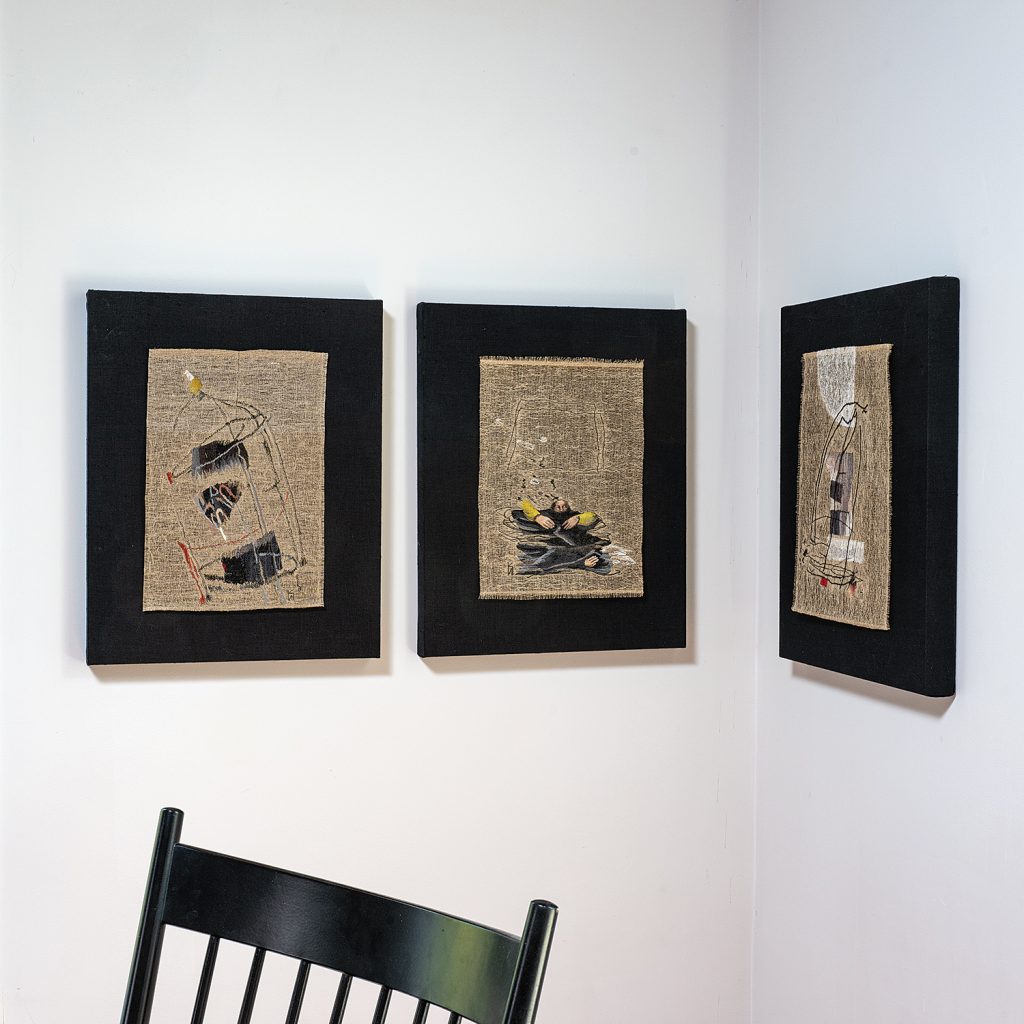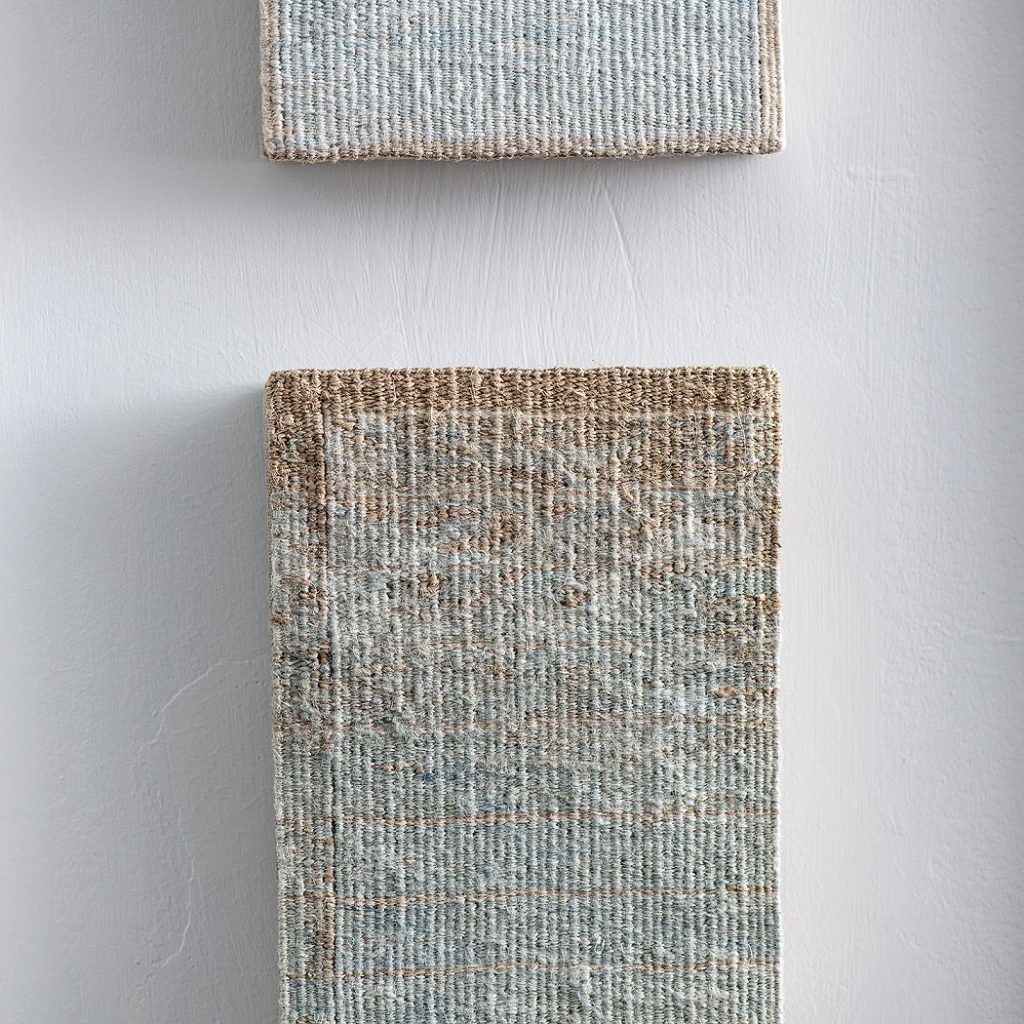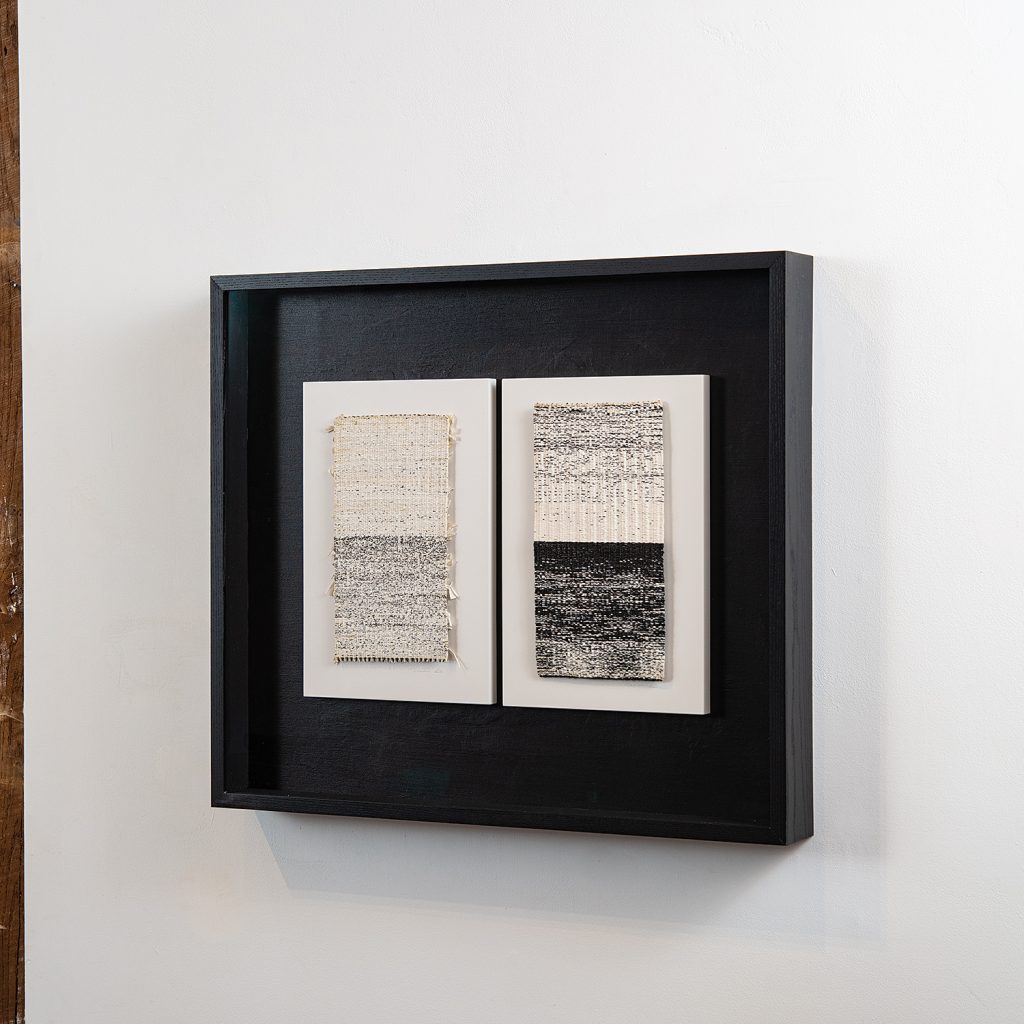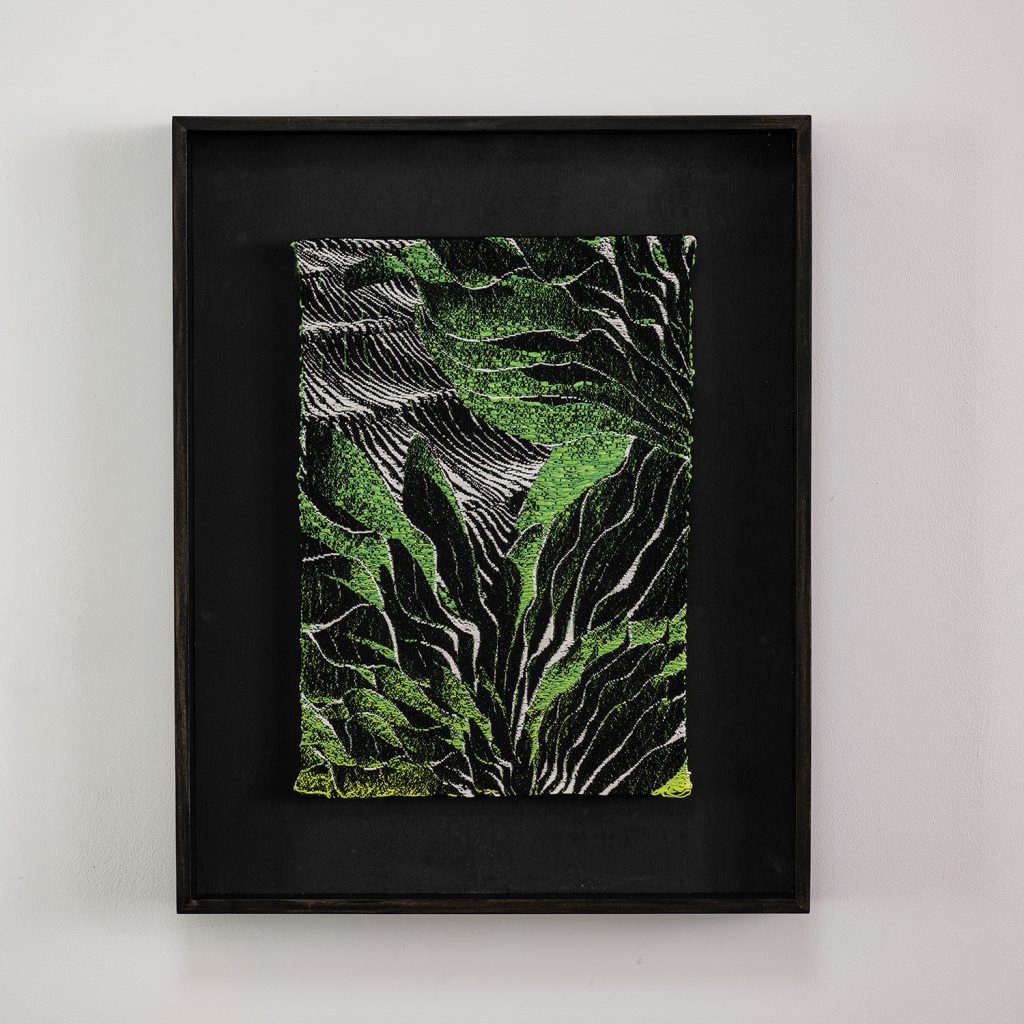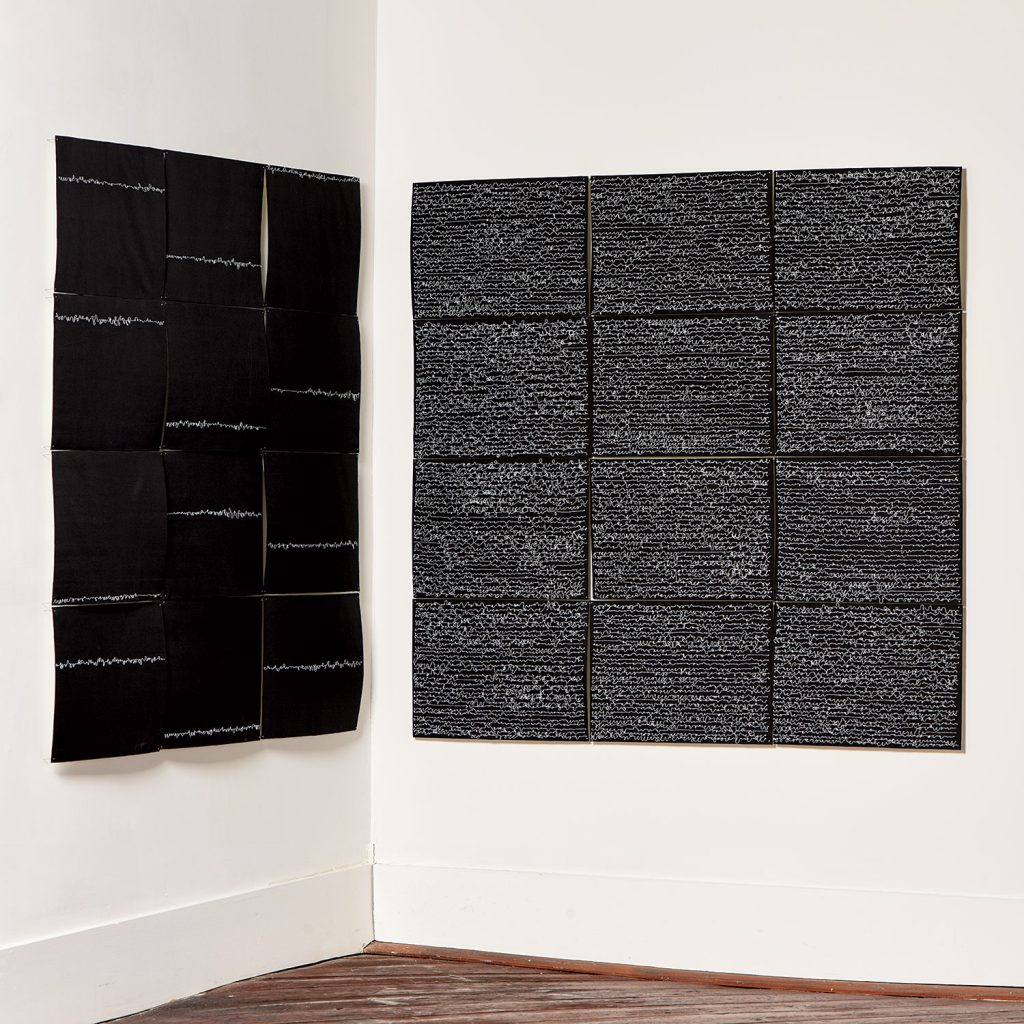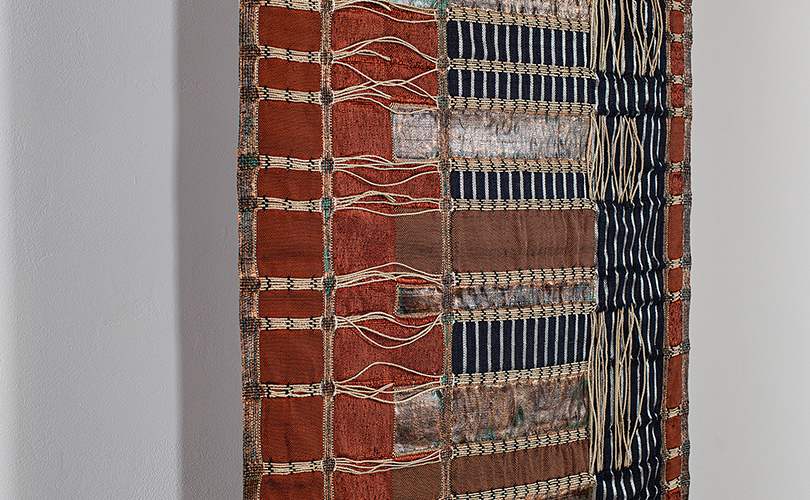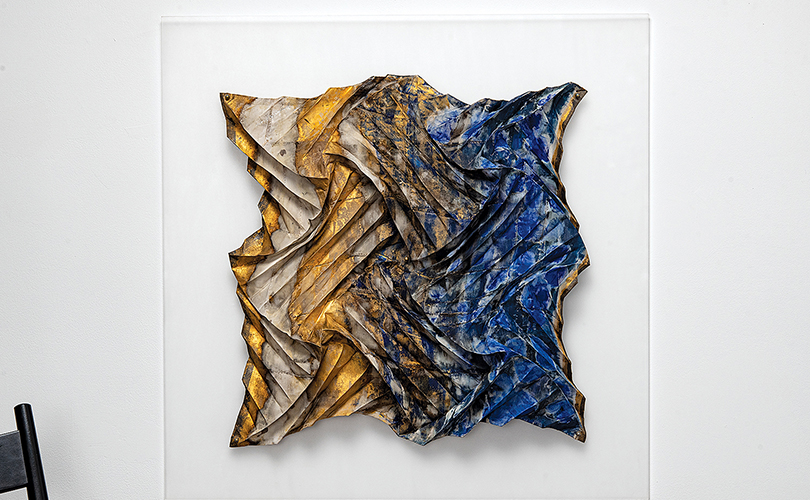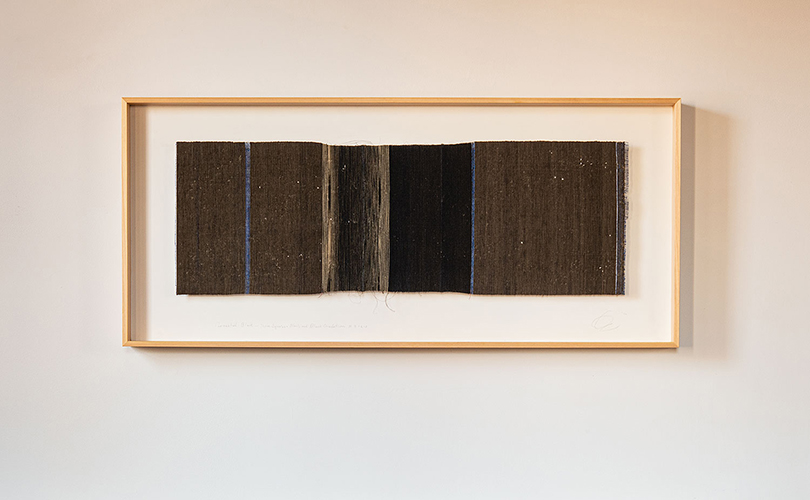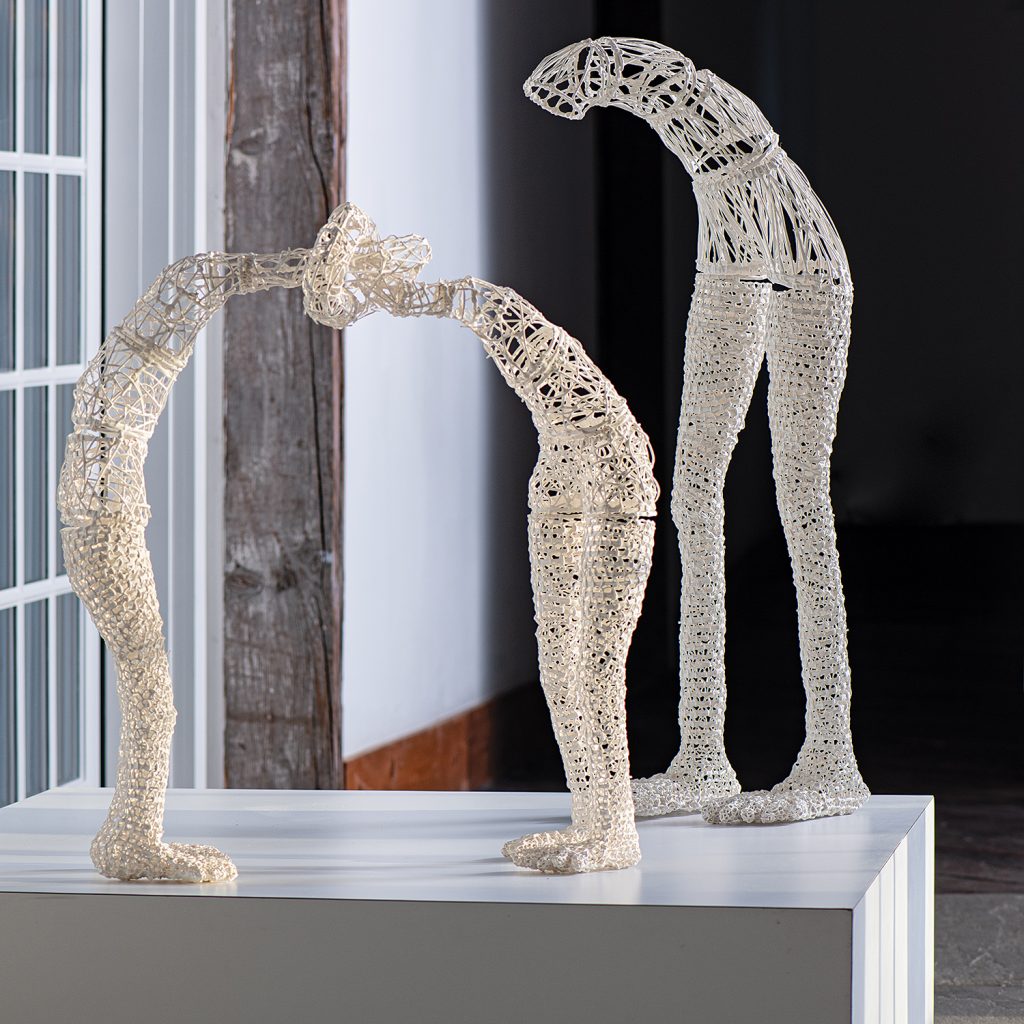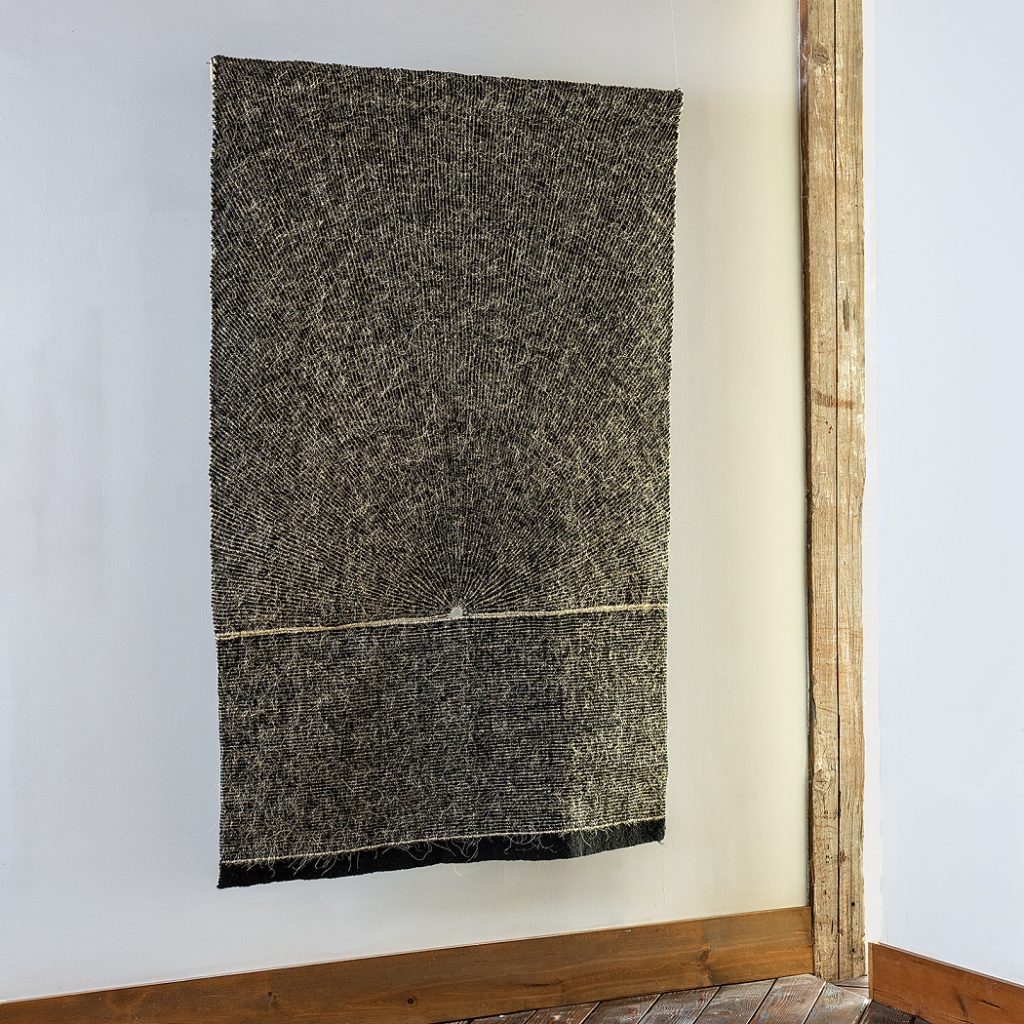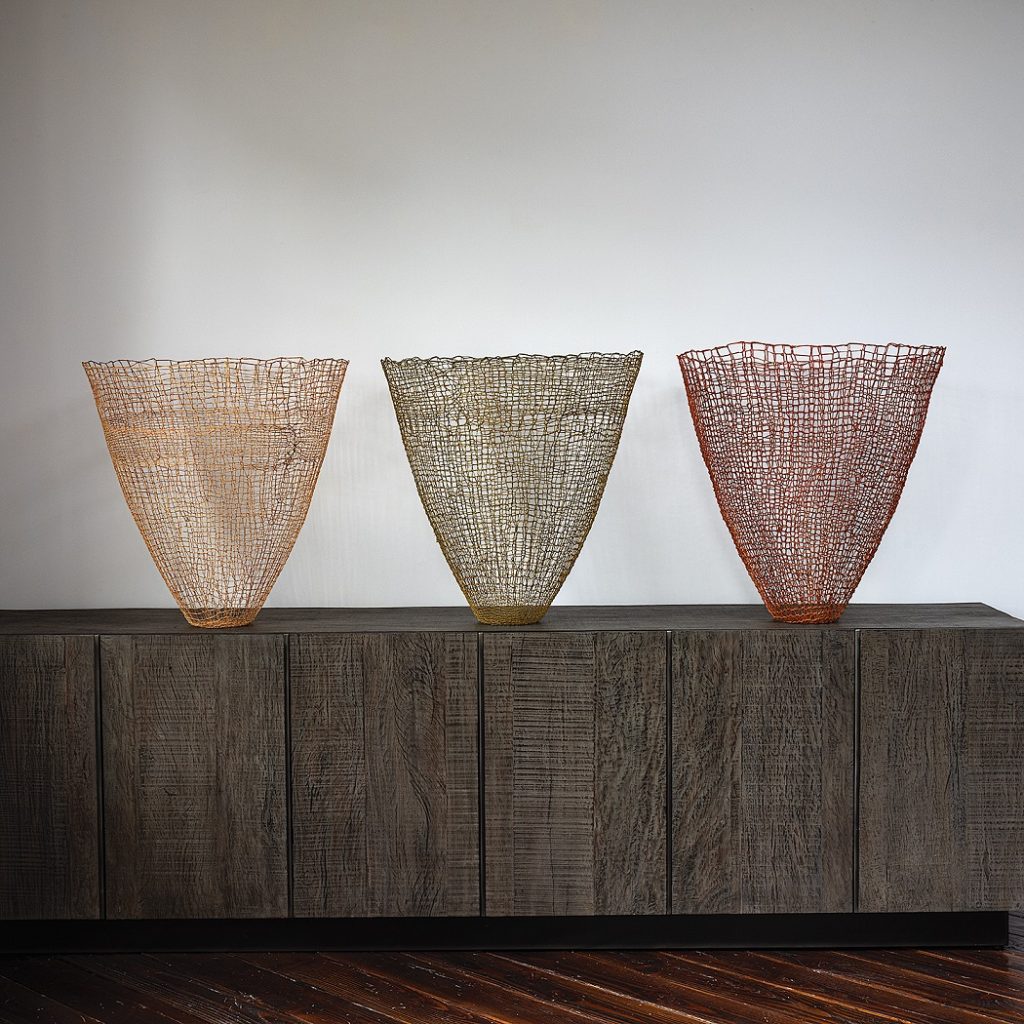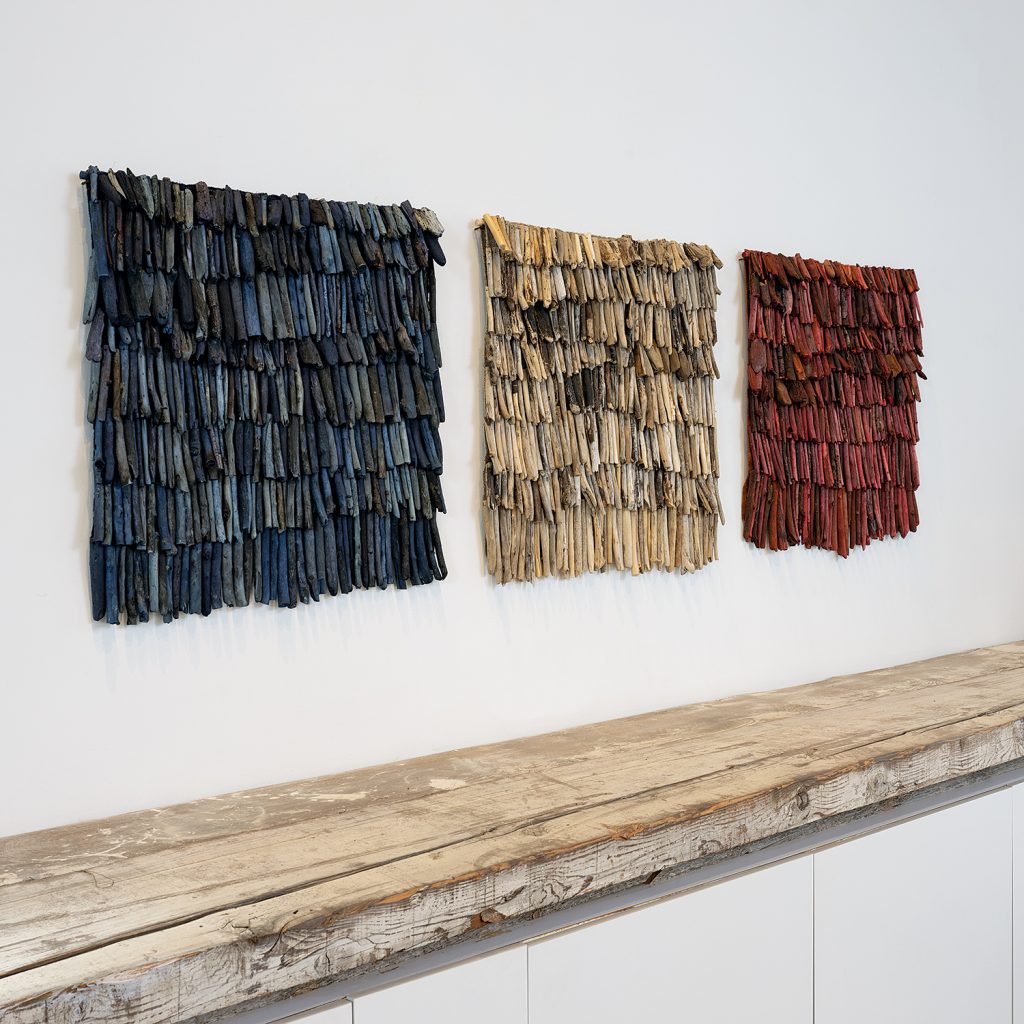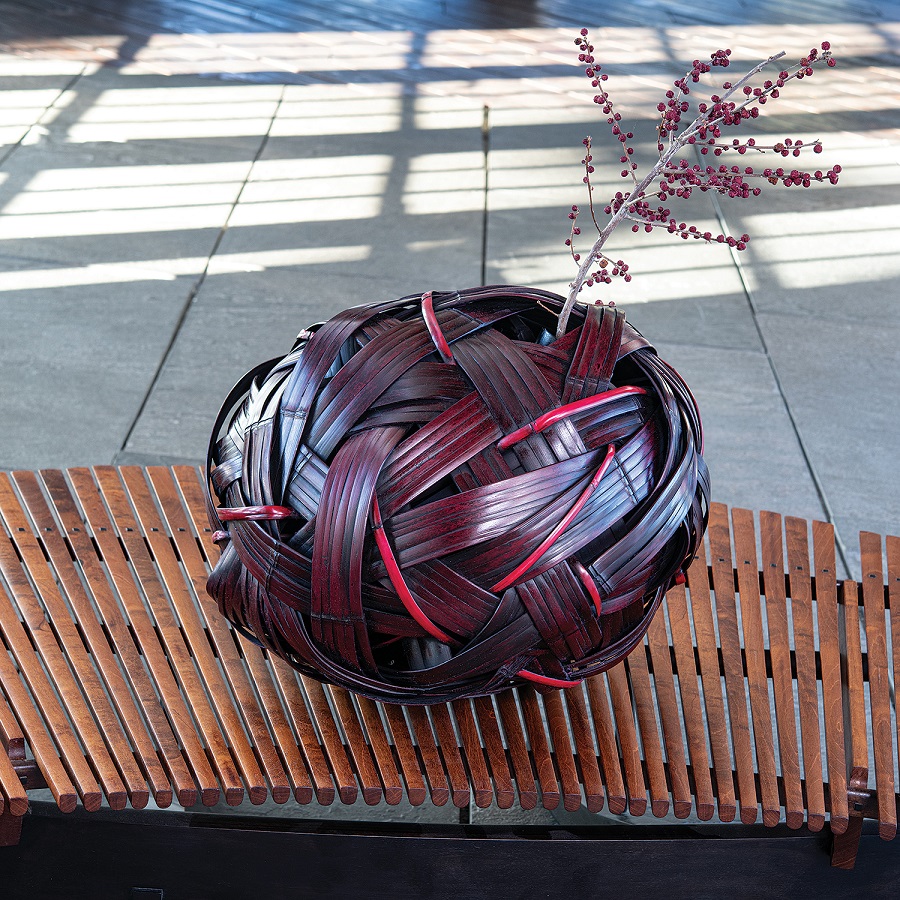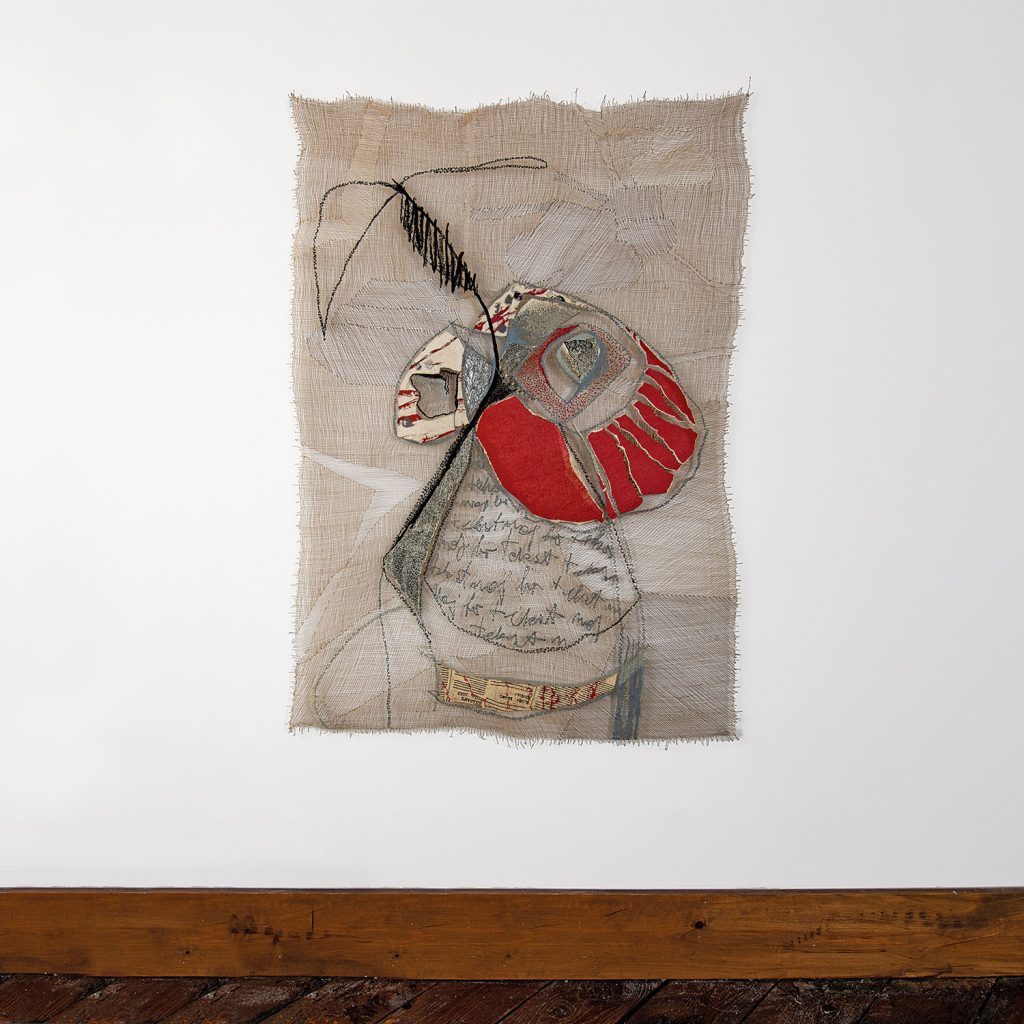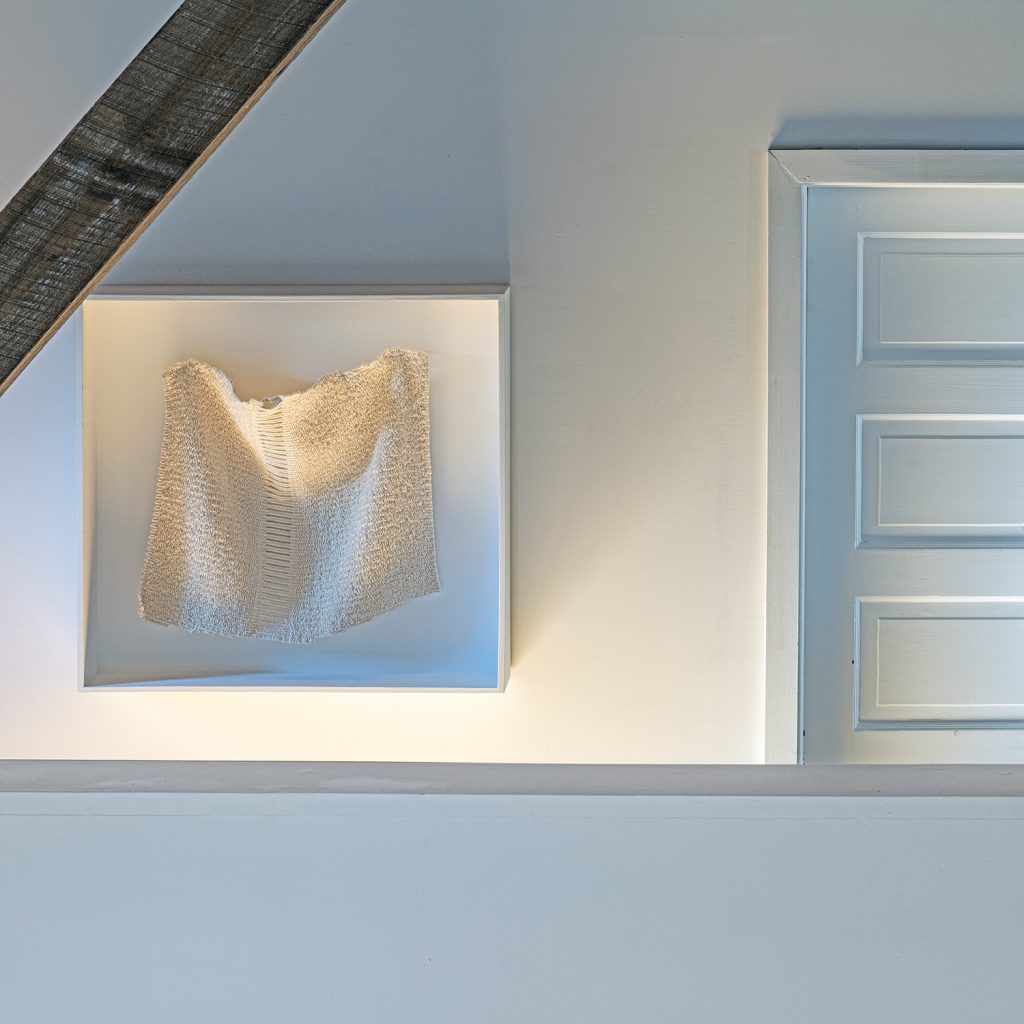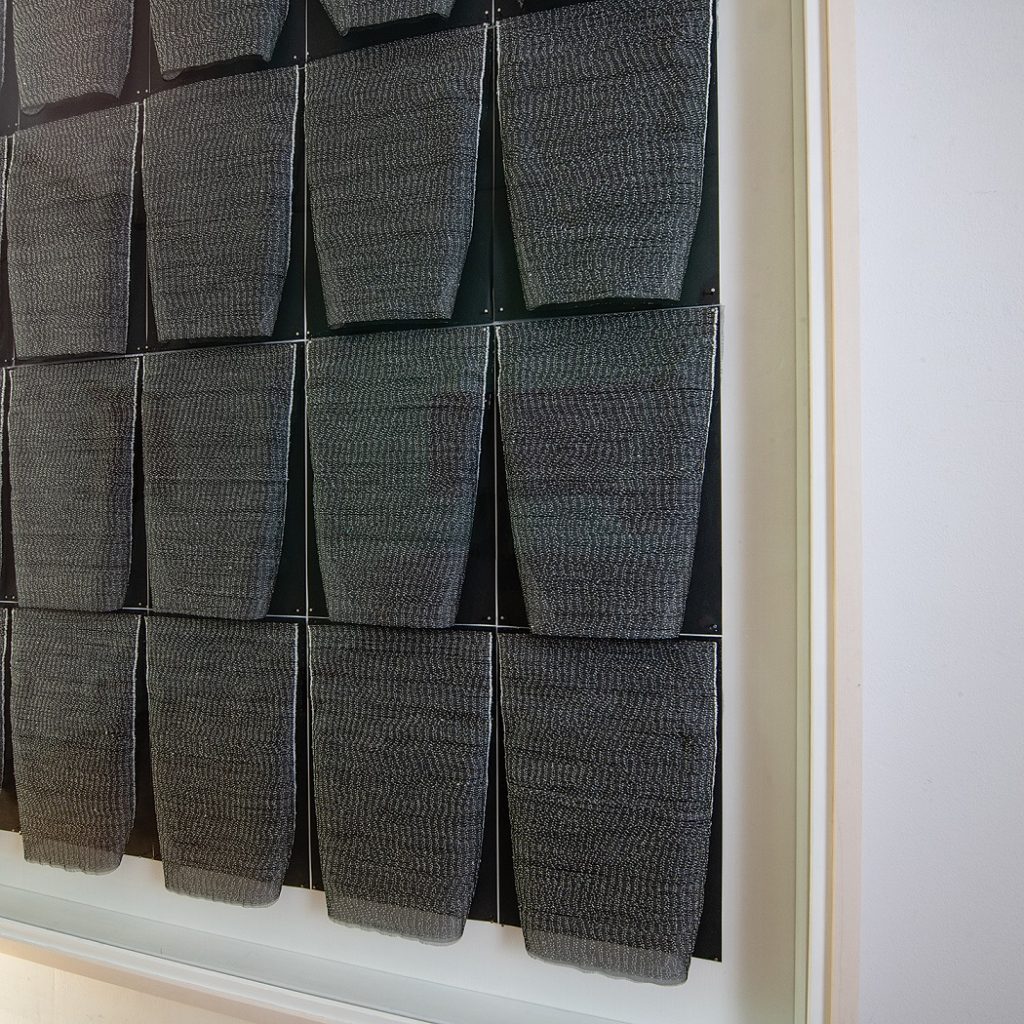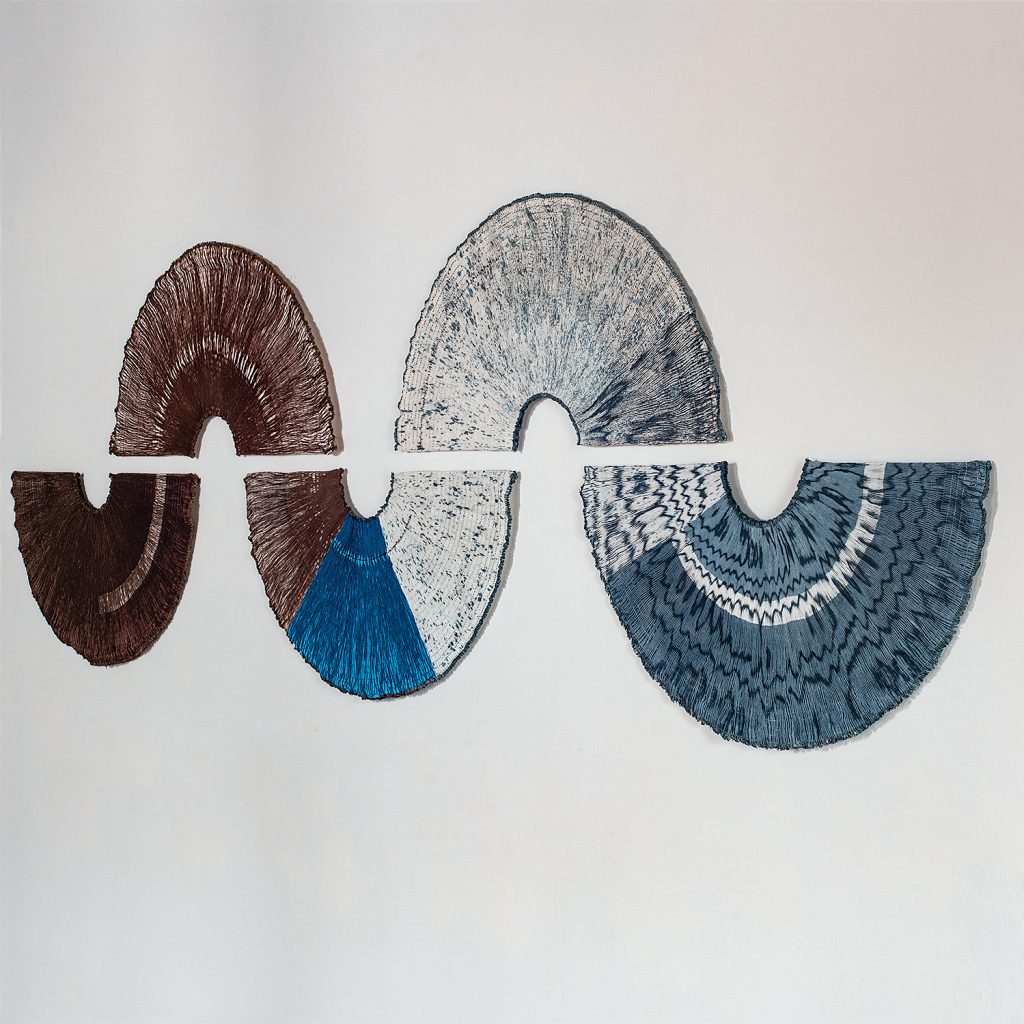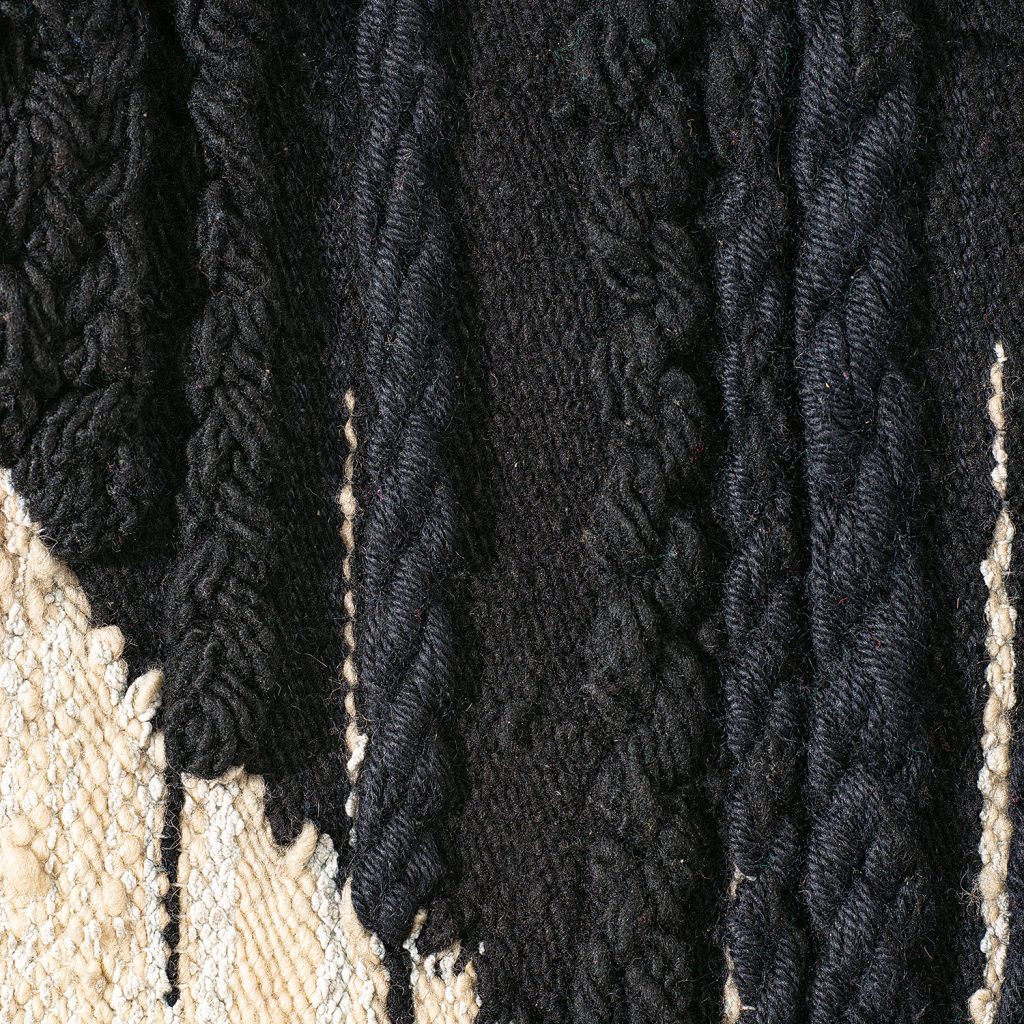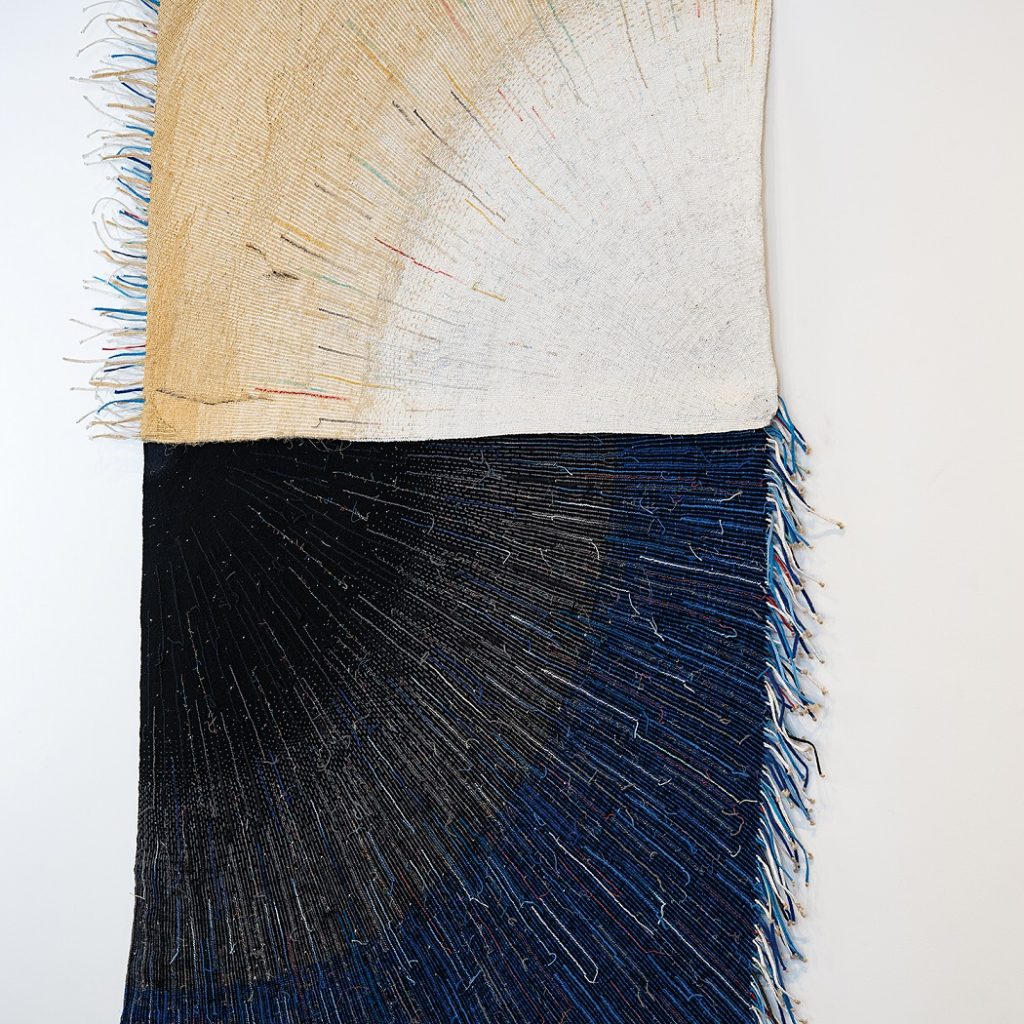Welcome to our May Art Assembled blog, where we are delighted to present the latest additions to our New This Week series. As we bid farewell to our in person exhibition, Acclaim! Work by Award-Winning International Artists, we are thrilled to announce that this captivating exhibition is now available for online viewing on Artsy. For a closer look at the remarkable artworks that graced our in-person exhibition, click here.
In this month’s feature, we turn our spotlight to the exceptional talents of Grethe Sørensen, Dominic Di Mare, Mercedes Vicente, and Lewis Knauss. Each artist brings a unique perspective and artistic vision, showcasing their mastery of different mediums and techniques. From Sørensen’s intricate tapestries to Di Mare’s dimensional weavings and intricate assemblages, Vicente’s captivating sculptures, and Knauss’s textured landscapes – their artworks will transport you to new realms of artistic expression.
Read on as we delve deeper into the artistic journeys of these remarkable artists, exploring their inspirations, techniques, and the stories behind their captivating creations. Be prepared to be captivated and inspired by their exceptional talent!
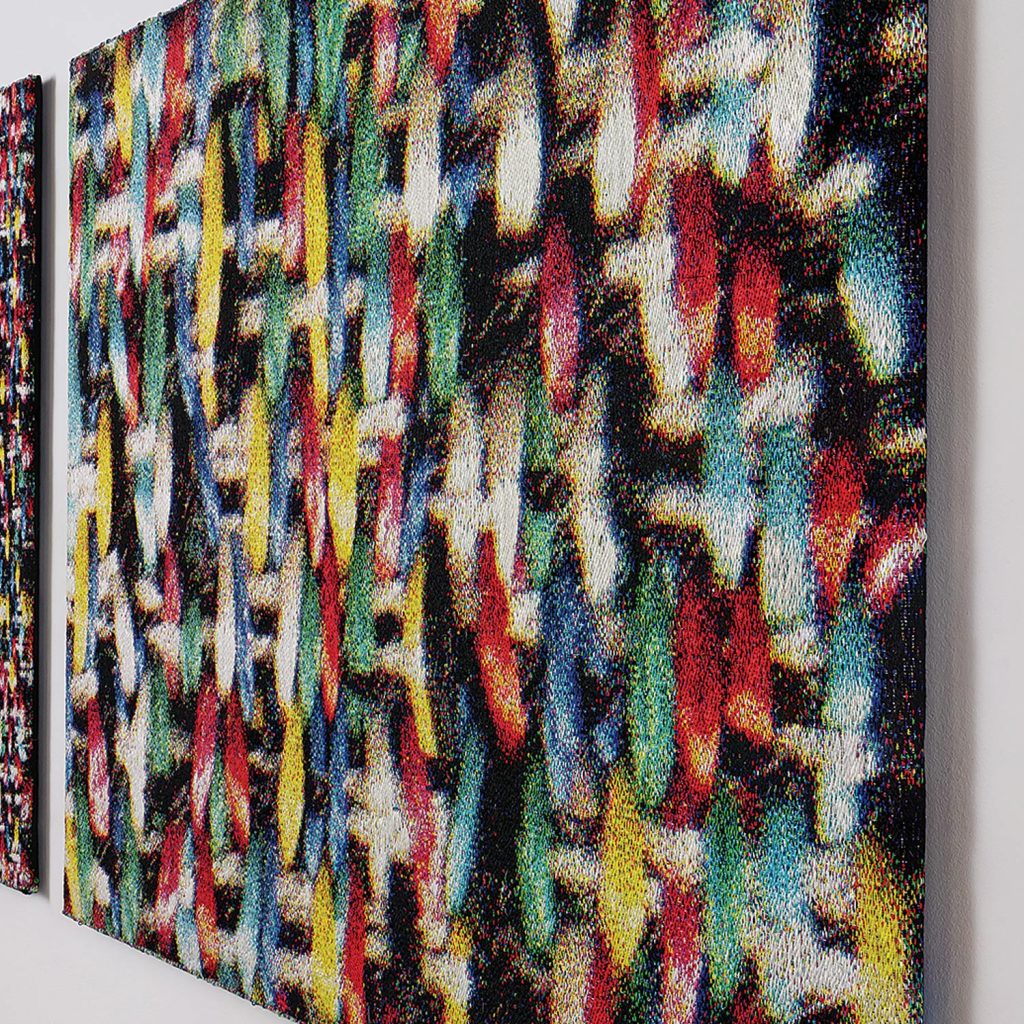
At the beginning of the month, we highlighted art from the one and only, Grethe Sørensen. If you don’t already know, Sørensen is a visionary Danish artist whose exploration of digital technologies has revolutionized the art of tapestry. Her mastery of digital thread control and digital jacquard weaving has allowed her to weave intricate and diverse motifs with remarkable precision.
Sørensen’s technique combines the ancient craft of weaving with the realm of video, where she meticulously selects and manipulates still images to create poetic compositions of pixels, traffic lights, neon signs, and more, all rendered in delicate cotton threads. Color gradation holds a special fascination for Sørensen, as she experiments with dying the warp before weaving, blending threads of varying nuances to achieve captivating shades and tones.
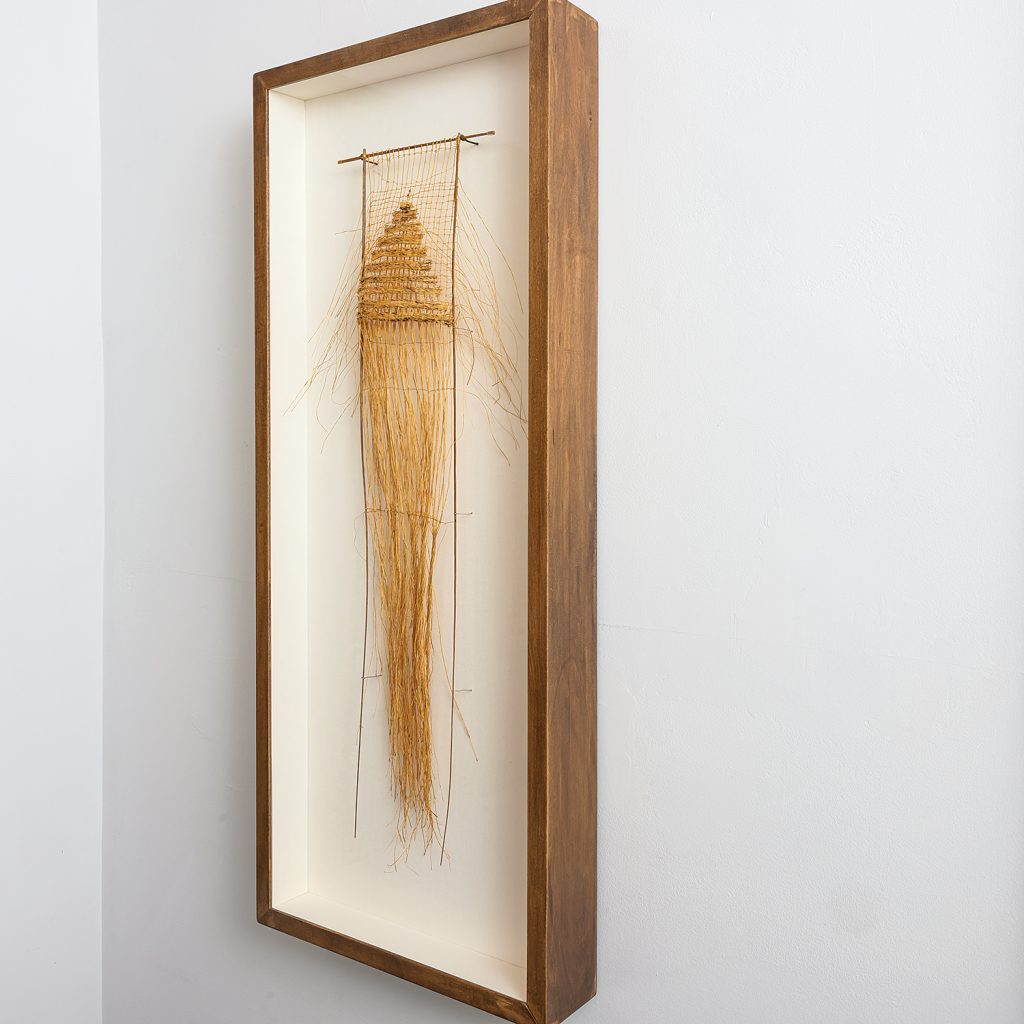
We then turned our spotlight to the remarkable artist Dominic Di Mare. Hailing from the United States, Di Mare is a true master of multiple artistic mediums, including weaving, abstract mixed-media sculpture, watercolor paintings, cast paper art, and fiber art. His diverse body of work explores themes of personal spirituality, captivating viewers with its depth and emotive power.
Di Mare’s artistic journey has been marked by groundbreaking innovations. In the 1960s, he gained acclaim for pioneering dimensional weaving, pushing the boundaries of traditional weaving techniques and creating captivating three-dimensional structures.
In the following decades, he continued to push artistic boundaries, exploring cast paper techniques and mixed-media sculpture that seamlessly blend different materials and textures. His sculptures, featuring delicately carved hawthorn branches adorned with feathers, beads, paper, and horsehair, evoke a sense of poetic beauty that resonates deeply with viewers – which is obvious in the artwork we highlighted throughout the month.

We then turned our attention to Mercedes Vicente, hailing from Galicia, Spain. With a specialization in craft art, Vicente has garnered recognition as a regular participant in exhibitions worldwide. Her current artistic endeavors revolve around wood and textile projects, with a particular focus on sculptures crafted from canvas strips.
Vicente’s artistic journey has been a dynamic one. While her early work leaned towards the pictorial, it eventually evolved into the realm of sculpture, with canvas becoming her primary medium of choice. Embracing this technique, she discovered that people were captivated by the intricate and labor-intensive process involved. This realization led her to view her work as a fusion of craftsmanship, art, and design—an expression of creativity that transcends traditional boundaries.
What truly inspires Vicente is the remarkable nature of the fabric she works with. The elastic, organic, flexible, and translucent properties of the material serve as a constant source of fascination and experimentation. It is through her meticulous manipulation of these fabrics that she breathes life into her sculptures, imbuing them with a sense of fluidity and movement.
The best of all? You can now get your hands on artwork from Vicente in our spring exhibition, Acclaim!, which is now live on Artsy.
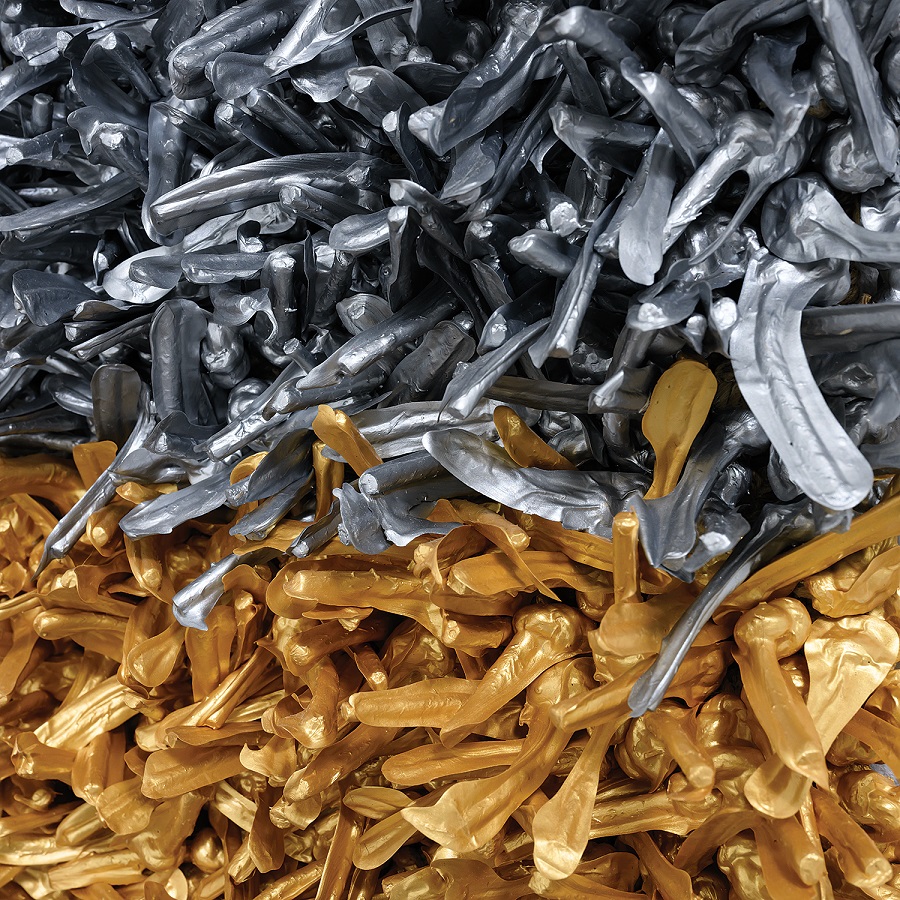
Last, but not least, we delve into the captivating world of Lewis Knauss, where the significance of place takes center stage. Knauss’s artistic practice revolves around the exploration of landscape, identity, and our sense of belonging, all expressed through the textures, materials, and processes of textiles.
In Knauss’s intricate works, we witness a visual narrative that pays homage to the places that hold deep personal meaning to the artist. From the charming towns of Macungie and Philadelphia, Pennsylvania, to the serene landscapes of upstate New York, the rugged beauty of Colorado, the enchanting deserts of New Mexico, and the coastal allure of Cape Cod—each location weaves its essence into his art.
Using a diverse array of fibers and materials, Knauss meticulously knots and weaves these elements together, creating intricate tapestries that evoke the organic growth found in nature. Through his masterful craftsmanship, he artfully references the passage of time, capturing the ever-changing landscapes and the narratives they hold.
We invite you to continue exploring the diverse and captivating works of these artists by visiting our online exhibition, Acclaim!, now available on Artsy until Friday, June 30. Immerse yourself in the beauty, intricacy, and thought-provoking narratives captured in each artwork. Let their creations spark your own creative journey and inspire a deeper appreciation for the boundless possibilities of art.
Thank you for joining us on this artistic adventure. Stay tuned for more exciting exhibitions, artist highlights, and art discoveries in the months to come. Until then, keep embracing the transformative power of art in your own lives!


